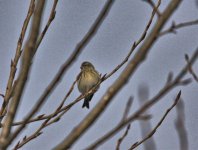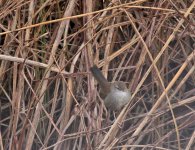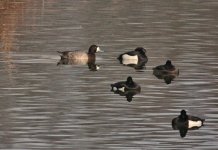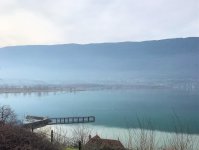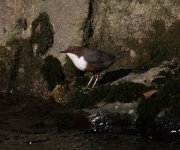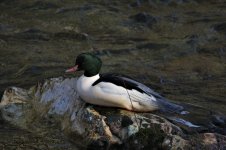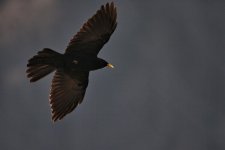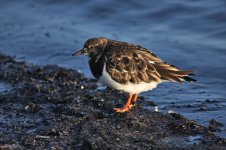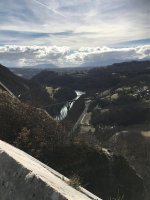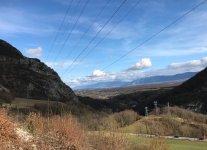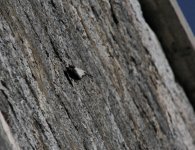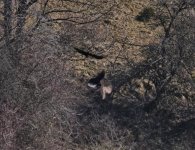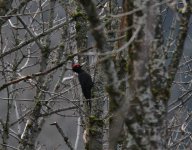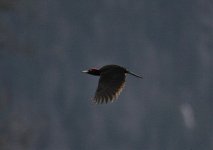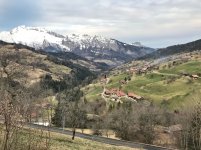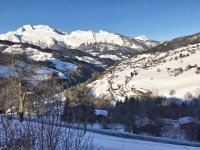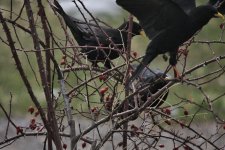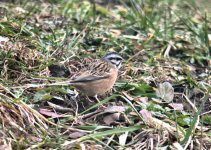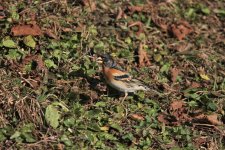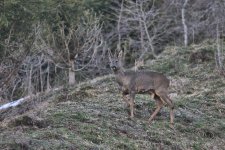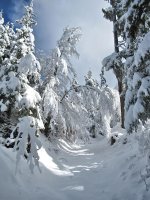-
Welcome to BirdForum, the internet's largest birding community with thousands of members from all over the world. The forums are dedicated to wild birds, birding, binoculars and equipment and all that goes with it.
Please register for an account to take part in the discussions in the forum, post your pictures in the gallery and more.
You are using an out of date browser. It may not display this or other websites correctly.
You should upgrade or use an alternative browser.
You should upgrade or use an alternative browser.
Birding halfway up the Alps (1 Viewer)
- Thread starter Richard Prior
- Start date
More options
Who Replied?foresttwitcher
Virtually unknown member

What a stunning location!
Richard Prior
Halfway up an Alp

A similar thing happened, to Roy Dennis I believe, decades ago when in the middle of the Flow Country in northern Scotland, not a tree for many miles, he had to pause at a strategically placed P-stop, and found an American warbler in the bushes struggling to exist on the sheltered side of the brick convenience!
MJB
The Flow Country indeed!
MJB
Well-known member
The Flow Country indeed!
It could prey on your mind on a long journey on single-track roads...!
Did you know you can call out a Pygmy Owl when it's holding territory? It's a half-whistled Whoo, Whoo, whoo-whoo-whoo, the first two notes lasting as long as the three rapid notes. It worked for me in Slovakia, but don't do it when it gets really dark - you'll get a male, claws first, into your face...
It's also a useful call when mapping out Pygmy Owl breeding territories. If it doesn't set off the small passerines uttering alarm calls in response, your location isn't a Pygmy Owl territory. If you get a Pygmy Owl response, it is!
MJB
Richard Prior
Halfway up an Alp

Did you know you can call out a Pygmy Owl when it's holding territory? It's a half-whistled Whoo, Whoo, whoo-whoo-whoo, the first two notes lasting as long as the three rapid notes. It worked for me in Slovakia, but don't do it when it gets really dark - you'll get a male, claws first, into your face...
It's also a useful call when mapping out Pygmy Owl breeding territories. If it doesn't set off the small passerines uttering alarm calls in response, your location isn't a Pygmy Owl territory. If you get a Pygmy Owl response, it is!
MJB
Thanks for that, I mistakenly had thought that call was the ‘autumn’ one made by young males establishing territory, I have tried whistling both that call and the repetitive same note call, Coal and Crested Tits and Goldcrests have reacted but never the owl ( so far ).
MJB
Well-known member
Thanks for that, I mistakenly had thought that call was the ‘autumn’ one made by young males establishing territory, I have tried whistling both that call and the repetitive same note call, Coal and Crested Tits and Goldcrests have reacted but never the owl ( so far ).
You could be right about that call in the autumn, but I've only been in Pygmy Owl country in Spring and early summer!
Good to see the small passerines can identify the threat in autumn!
MJB

Stunning location Rich.
Richard Prior
Halfway up an Alp

Living here’s a tough job Rich, but someone’s got to do it 
Richard Prior
Halfway up an Alp

Lac du Bourget
13 January
With a 3 hour session at the dentist programmed for later in the week I decided I deserved a bit of a treat beforehand, so went down from Haute-Savoie into Savoie, to the southern end of Lac du Bourget which has a mixture of reedbeds, ponds, woodland and the expanse of the lake to scan. Lac du Bourget is the deepest lake located entirely within France, and with a surface area of 44square kms it’s either the largest or second largest depending on season, rivalling Lac de Grand Lieu near the Atlantic coast (which presumably becomes larger than Bourget in winter and shrinks in summer?).
An early start backfired on me as the still, freezing conditions were compounded by thick fog on my arrival so instead of doing lakeshore birding I started at an area alongside the Chambery/Grenoble Airport, a sluggish river with reeds, set-aside and bushes, the Bras de Décharge de Leysse regularly produces local rarities not just in winter but also in those spring overshooting/autumn dispersal periods. It’s also the closest place to home where Zitting Cisticola occurs and this winter a few Penduline Tit have been seen. Needless to say I didn’t have any luck with those two, but was pleasantly surprised to find a mixed finch flock, Serin by far the most numerous in the group (around 100!) which was otherwise made up of Chaffinch, Brambling, Greenfinch, Linnet (well, one anyway) and Reed Bunting. I accidentally flushed a couple of Common Snipe when I walked down into a damper patch of the habitat.
The fog was proving tenacious so telescope viewing the lake not an option , I therefore decamped to the Etang des Aigrettes (seeing my first Siskin of the year in riverside trees) just 2kms away, an interesting mix of habitats, flooded forest, reeds and boggy grass where there was the bonus of a two-storey hide (hides being pretty rare in these parts). Despite my best efforts it seemed that the two guys with big lenses in the hide were not in the mood for exchanging information (or even pleasantries!) so I spent an almost silent hour scanning the lagoon and vegetation around while they remained motionless and not actually doing any what I'd call birding. I managed to locate a female Scaup amongst the 1000 or so Tufted and Pochard and a Cetti’s Warbler right by the hide which (rarely for this species) popped into the open briefly to allow me to take a fog-infused picture with my old Canon. I received a cursory nod from one of my two ‘companions’ when I drew their attention to it (the Cetti’s, not my embarrassingly antique camera ) but they only sprang into action when a Mute Swan and Greylag Goose hove into view. Still, each to their own style of birding I say :t:.
) but they only sprang into action when a Mute Swan and Greylag Goose hove into view. Still, each to their own style of birding I say :t:.
Visibility was now good and my last port of call was again just 5 minutes away, the Etang des Mottets/de buttet at the S.Eastern corner of the lake. Best bird here was a Lesser Spotted Woodpecker, otherwise it was more Snipe, Blue Tits and Chiffchaff lurking in the reeds and commoner ducks on the lake. Velvet Scoter and Red-throated Diver had been seen a few days before but I had no luck there. This southern end of Lac du Bourget provides a cracking day’s birding, particularly in the migration periods and appears to be one of the few sites in Savoie Département that is birded almost daily, so Faune-Savoie.org usually has current sightings for this area if you’re contemplating a visit there. I will no doubt do another post from there when springtime comes.
13 January
With a 3 hour session at the dentist programmed for later in the week I decided I deserved a bit of a treat beforehand, so went down from Haute-Savoie into Savoie, to the southern end of Lac du Bourget which has a mixture of reedbeds, ponds, woodland and the expanse of the lake to scan. Lac du Bourget is the deepest lake located entirely within France, and with a surface area of 44square kms it’s either the largest or second largest depending on season, rivalling Lac de Grand Lieu near the Atlantic coast (which presumably becomes larger than Bourget in winter and shrinks in summer?).
An early start backfired on me as the still, freezing conditions were compounded by thick fog on my arrival so instead of doing lakeshore birding I started at an area alongside the Chambery/Grenoble Airport, a sluggish river with reeds, set-aside and bushes, the Bras de Décharge de Leysse regularly produces local rarities not just in winter but also in those spring overshooting/autumn dispersal periods. It’s also the closest place to home where Zitting Cisticola occurs and this winter a few Penduline Tit have been seen. Needless to say I didn’t have any luck with those two, but was pleasantly surprised to find a mixed finch flock, Serin by far the most numerous in the group (around 100!) which was otherwise made up of Chaffinch, Brambling, Greenfinch, Linnet (well, one anyway) and Reed Bunting. I accidentally flushed a couple of Common Snipe when I walked down into a damper patch of the habitat.
The fog was proving tenacious so telescope viewing the lake not an option , I therefore decamped to the Etang des Aigrettes (seeing my first Siskin of the year in riverside trees) just 2kms away, an interesting mix of habitats, flooded forest, reeds and boggy grass where there was the bonus of a two-storey hide (hides being pretty rare in these parts). Despite my best efforts it seemed that the two guys with big lenses in the hide were not in the mood for exchanging information (or even pleasantries!) so I spent an almost silent hour scanning the lagoon and vegetation around while they remained motionless and not actually doing any what I'd call birding. I managed to locate a female Scaup amongst the 1000 or so Tufted and Pochard and a Cetti’s Warbler right by the hide which (rarely for this species) popped into the open briefly to allow me to take a fog-infused picture with my old Canon. I received a cursory nod from one of my two ‘companions’ when I drew their attention to it (the Cetti’s, not my embarrassingly antique camera
Visibility was now good and my last port of call was again just 5 minutes away, the Etang des Mottets/de buttet at the S.Eastern corner of the lake. Best bird here was a Lesser Spotted Woodpecker, otherwise it was more Snipe, Blue Tits and Chiffchaff lurking in the reeds and commoner ducks on the lake. Velvet Scoter and Red-throated Diver had been seen a few days before but I had no luck there. This southern end of Lac du Bourget provides a cracking day’s birding, particularly in the migration periods and appears to be one of the few sites in Savoie Département that is birded almost daily, so Faune-Savoie.org usually has current sightings for this area if you’re contemplating a visit there. I will no doubt do another post from there when springtime comes.
Attachments
Richard Prior
Halfway up an Alp

Thônes Sunday trio
Ten minutes by road from our home is the market town of Thônes, where ‘our’ river, the Fier is joined by another, the Nom (I guess they couldn’t think of a real name for it..... :-O ) Overlooking the confluence of the two rivers is a massive rock on which Chamois can be observed, I’ve even seen a couple of them grazing on the grass of one of the roundabouts not far from the town centre and it’s also usually home to a special bird, of which more in future months (I hope). I did a bit of post-church birding, hoping I might find wintering Rock Bunting at the base of the rock, but soon turned my attention to the river, where a pair of Dipper were buzzing up and down, calling occasionally. There on a rock in the middle of the rushing current was a fine male Goosander and a Grey Wagtail flew off towards the trout fishery nearby. A pair of Marsh Tits were already in spring mode and a Short-toed Treecreeper was singing in the same small patch of woodland by the river. Although we’re just a few kms away we never see Short-toed at home but Common Treecreeper replaces it, as far as breeding records go, 800m altitude seems to be the break point between the two species hereabouts though Common is seen at lower altitudes in winter. Another feature of Thônes in winter is the presence of a wintering flock of up to 100 Alpine Chough. Before moving here I used to assume they all stayed up in the mountains in winter, relying on handouts and scavenging at the numerous Alpine ski resorts but I know of two other low-lying large villages within 30kms where there are wintering flocks.
Ten minutes by road from our home is the market town of Thônes, where ‘our’ river, the Fier is joined by another, the Nom (I guess they couldn’t think of a real name for it..... :-O ) Overlooking the confluence of the two rivers is a massive rock on which Chamois can be observed, I’ve even seen a couple of them grazing on the grass of one of the roundabouts not far from the town centre and it’s also usually home to a special bird, of which more in future months (I hope). I did a bit of post-church birding, hoping I might find wintering Rock Bunting at the base of the rock, but soon turned my attention to the river, where a pair of Dipper were buzzing up and down, calling occasionally. There on a rock in the middle of the rushing current was a fine male Goosander and a Grey Wagtail flew off towards the trout fishery nearby. A pair of Marsh Tits were already in spring mode and a Short-toed Treecreeper was singing in the same small patch of woodland by the river. Although we’re just a few kms away we never see Short-toed at home but Common Treecreeper replaces it, as far as breeding records go, 800m altitude seems to be the break point between the two species hereabouts though Common is seen at lower altitudes in winter. Another feature of Thônes in winter is the presence of a wintering flock of up to 100 Alpine Chough. Before moving here I used to assume they all stayed up in the mountains in winter, relying on handouts and scavenging at the numerous Alpine ski resorts but I know of two other low-lying large villages within 30kms where there are wintering flocks.
Attachments
Richard Prior
Halfway up an Alp

'Creeping' through late January to mid-February
A rare (for this mild winter at least) day of blizzard-like conditions on the 28th forced a group of c30 Alpine Chough into our valley, last year a group visited the garden in similar weather but this flock just pootled back up the valley as the snow eased. I managed a peak count for the winter of 37 Yellowhammer around the feeders on 30th but the whole period saw little fluctuation in numbers of the wintering/ resident species and just a single Siskin visited for a couple of days. I have seen no Crossbills since last August so there must be a good cone crop further north! There are a number of short-distance altitudinal migrants that leave us in winter and return as the days lengthen in February, so far Woodpigeon, Starling and White Wagtail have reappeared and the very mild weekend of 15/19 February got the Chaffinch and Robin singing for the first time this year. The local Golden Eagle pair have been down in the valley a few times as well, the male doing some swooping display flight on the 10th, while the female and last year’s youngster circled nearby (I’m surprised the adults are still tolerating the young bird, I hope it doesn’t mean they’re not going to breed, comments by eagle experts welcome!).
On 7th I went to pay homage to the celebrity OAP Turnstone (see this thread: https://www.birdforum.net/showthread.php?t=352937&page=2 for more details of this remarkable bird) beside Lac Léman (French shore), it was on fine form, though limping a little due to having lost a toe somehow during this winter’s stay. It was freezing cold by the lake but a flat calm, enabling me to pick out the 12 wintering Velvet Scoter eventually (it didn’t help that they’d split into two mini-flocks about 2kms apart and were well offshore). Velvets are by far the more regular of the scoter species here, Common is less than annual on the lake. After a well-deserved (in my opinion) jug of the best hot chocolate in France at Le Lancelot Patisserie in Sciez I was warmed up enough to decamp a bit further towards Geneva to search for, and eventually find the two Great Northern Diver that have been valiantly trying to reduce the population of the invasive American Crayfish that inhabits the lake. Of the three commoner diver species in Europe, Black-throated is by far the most numerous winterer in our region, GND and Red-throated not guaranteed each year.
On Valentine’s Day I showed how much I love my wife by acting as her chauffeur and dropping her off at work. This meant that after a few chores I had the car fnaar fnaaar 8-P. A sunny day tempted me down to Défilé de L’Ecluse where the Rhône has carved a gorge which separates the Jura mountain range from Haute-Savoie. It is a great migration watchpoint in autumn, particularly for birds of prey and storks, a spotting point is manned from mid-July to late November with some impressive totals, see: http://haute-savoie.lpo.fr/index.php?m_id=113&fh=0&uid=178&year=2019&bsid=0&
As well as a great migration site it was historically strategically important, protecting the access through the gorge, any army coming from the south up the Rhône valley could avoid mountain crossings by cutting through here and arriving at Geneva just 12kms further on. Unsurprisingly therefore there are two Napoleonic – era forts, one beside the road and river (and post Napoleonic railway) and another perched up on the overlooking cliffs. I was cursing the fact that I’d forgotten my walking boots at home but decided to trek up to the higher fort, I was in luck because the track is surfaced (something else I’d forgotten!) so fancy trainers sufficed. The track winds up through deciduous woodland, still pretty quiet in February though I heard a Black Woodpecker calling along with various tits. Both the forts can hold a Wallcreeper or two in winter and sometimes Alpine Accentor too, as I arrived at the upper fort sure enough there was one of the former feeding on the battlements. It quickly scooted higher and higher then flew off into the inaccessible interior of the structure and despite me hanging about for another hour it didn’t reappear so I consider myself lucky to have seen it at all. In June I’ll go and hike up into the Alps proper to a spot where they breed, seeing them in the summer plumage and hearing them call is somehow more rewarding for me.
A rare (for this mild winter at least) day of blizzard-like conditions on the 28th forced a group of c30 Alpine Chough into our valley, last year a group visited the garden in similar weather but this flock just pootled back up the valley as the snow eased. I managed a peak count for the winter of 37 Yellowhammer around the feeders on 30th but the whole period saw little fluctuation in numbers of the wintering/ resident species and just a single Siskin visited for a couple of days. I have seen no Crossbills since last August so there must be a good cone crop further north! There are a number of short-distance altitudinal migrants that leave us in winter and return as the days lengthen in February, so far Woodpigeon, Starling and White Wagtail have reappeared and the very mild weekend of 15/19 February got the Chaffinch and Robin singing for the first time this year. The local Golden Eagle pair have been down in the valley a few times as well, the male doing some swooping display flight on the 10th, while the female and last year’s youngster circled nearby (I’m surprised the adults are still tolerating the young bird, I hope it doesn’t mean they’re not going to breed, comments by eagle experts welcome!).
On 7th I went to pay homage to the celebrity OAP Turnstone (see this thread: https://www.birdforum.net/showthread.php?t=352937&page=2 for more details of this remarkable bird) beside Lac Léman (French shore), it was on fine form, though limping a little due to having lost a toe somehow during this winter’s stay. It was freezing cold by the lake but a flat calm, enabling me to pick out the 12 wintering Velvet Scoter eventually (it didn’t help that they’d split into two mini-flocks about 2kms apart and were well offshore). Velvets are by far the more regular of the scoter species here, Common is less than annual on the lake. After a well-deserved (in my opinion) jug of the best hot chocolate in France at Le Lancelot Patisserie in Sciez I was warmed up enough to decamp a bit further towards Geneva to search for, and eventually find the two Great Northern Diver that have been valiantly trying to reduce the population of the invasive American Crayfish that inhabits the lake. Of the three commoner diver species in Europe, Black-throated is by far the most numerous winterer in our region, GND and Red-throated not guaranteed each year.
On Valentine’s Day I showed how much I love my wife by acting as her chauffeur and dropping her off at work. This meant that after a few chores I had the car fnaar fnaaar 8-P. A sunny day tempted me down to Défilé de L’Ecluse where the Rhône has carved a gorge which separates the Jura mountain range from Haute-Savoie. It is a great migration watchpoint in autumn, particularly for birds of prey and storks, a spotting point is manned from mid-July to late November with some impressive totals, see: http://haute-savoie.lpo.fr/index.php?m_id=113&fh=0&uid=178&year=2019&bsid=0&
As well as a great migration site it was historically strategically important, protecting the access through the gorge, any army coming from the south up the Rhône valley could avoid mountain crossings by cutting through here and arriving at Geneva just 12kms further on. Unsurprisingly therefore there are two Napoleonic – era forts, one beside the road and river (and post Napoleonic railway) and another perched up on the overlooking cliffs. I was cursing the fact that I’d forgotten my walking boots at home but decided to trek up to the higher fort, I was in luck because the track is surfaced (something else I’d forgotten!) so fancy trainers sufficed. The track winds up through deciduous woodland, still pretty quiet in February though I heard a Black Woodpecker calling along with various tits. Both the forts can hold a Wallcreeper or two in winter and sometimes Alpine Accentor too, as I arrived at the upper fort sure enough there was one of the former feeding on the battlements. It quickly scooted higher and higher then flew off into the inaccessible interior of the structure and despite me hanging about for another hour it didn’t reappear so I consider myself lucky to have seen it at all. In June I’ll go and hike up into the Alps proper to a spot where they breed, seeing them in the summer plumage and hearing them call is somehow more rewarding for me.
Attachments
Last edited:
Warixenjalka
Birdwitcher

By any chance, you wouldn't want to swap the local paths with me? 
Richard Prior
Halfway up an Alp

By any chance, you wouldn't want to swap the local paths with me?
Maybe when my knees start creaking, nice flat Finnish paths will be all I’ll be capable of walking then:eek!:
Richard Prior
Halfway up an Alp

In between days (with apologies to Robert Smith)
The second half of February is when a number of species that have been singing away down around Annecy or Geneva finally start their spring song at our altitude, I like to compare the dates each year and some species show impressive year on year regularity (this ‘citizen science’ t
t activity also stops me dwelling too much on the sameness of the avian activity in these ‘in between days’ when spring isn’t yet here but winter seems to be petering out). A few examples (with this year’s first date followed by last year’s in brackets): Robin 17th (15th), Wren 21st (27th), Chaffinch 15th (16th), Blackbird 26th (7th March), Goldfinch 21st (25th), Yellowhammer 25th (20th). No Greenfinch song/wheezing by the end of the month but they have been pretty uncommon all winter, some days I don’t see any which is unusual when I look back at my records over the last 14 winters.
activity also stops me dwelling too much on the sameness of the avian activity in these ‘in between days’ when spring isn’t yet here but winter seems to be petering out). A few examples (with this year’s first date followed by last year’s in brackets): Robin 17th (15th), Wren 21st (27th), Chaffinch 15th (16th), Blackbird 26th (7th March), Goldfinch 21st (25th), Yellowhammer 25th (20th). No Greenfinch song/wheezing by the end of the month but they have been pretty uncommon all winter, some days I don’t see any which is unusual when I look back at my records over the last 14 winters.
Unlike the altitudinal migrants that are absent in winter but present nearby at lower levels (Woodpigeon, Starling and White Wagtail for example) I consider the first true returning migrant here to be the Song Thrush as nearly all of them leave the plain for winter as well. The first one I heard was on the 21st (22nd last year) but I didn’t get to see one till the 29th, they keep well to the forest so they’re not what I’d call a garden visitor here.
Various appointments and then a week’s niece-minding over half-term meant this was a very local birding second half of February, my paltry year list finally limped past the 100 mark (disgraceful, I know), some pretty topsy-turvy weather saw 15°C and Small Tortoiseshells flying about one day, followed by blizzards and 15 to 20cms of snow lying around the house the next. Such episodes usually produce a few Alpine Accentors but not this year (so far), at least 50 Crag Martins were back in Thônes the day before the snow but quickly moved off, a handful returned a few days later. I made another yomp up into the forest to try and relocate the Pygmy Owl at dawn one morning, no luck again though a magnificent Red Deer stag gave me a fright in the half-light:eek!:
The two main highlights in this period were first, a ‘nature red in tooth and claw’ bit of action on 21st when the tell-tale alarm call of Carrion Crow alerted me to a drama taking place high in the sky, a female Goshawk was plunging earthwards hanging onto a desperately flapping crow with one other following the tumbling pair, my ropey photos suggest that the hawk had the crow held by a single claw and was basically trying to get to ground ASAP to finish the job. What was amazing was that within 30 seconds at least 50 crows and a few Ravens appeared as if from nowhere to survey the scene which unfortunately was hidden from me in the valley. My first Gos of the year and like London buses, another one came along soon after (well, the next day), a male this time, so breeding looks on the cards again this year.
Second highlight was the arrival of a Lesser Spotted Woodpecker on 21st, only the 4th time I’ve had the species up here and the first time outside the mid-winter period. It was still about on 29th, we’re right at the limit altitude-wise for possible breeding so fingers crossed. Its presence meant I managed two consecutive ‘four woodpecker days’ with the regular Black, Green and Great Spotted all showing as well, the normally shy Black Woodpecker even perched just across the road to have his photo taken, something I had singularly failed to achieve in our four years at this address!
(Photos of the Goshawk drama, Black Woodpecker and two contrasting views looking down the valley, before and after the snow’s return)
The second half of February is when a number of species that have been singing away down around Annecy or Geneva finally start their spring song at our altitude, I like to compare the dates each year and some species show impressive year on year regularity (this ‘citizen science’
Unlike the altitudinal migrants that are absent in winter but present nearby at lower levels (Woodpigeon, Starling and White Wagtail for example) I consider the first true returning migrant here to be the Song Thrush as nearly all of them leave the plain for winter as well. The first one I heard was on the 21st (22nd last year) but I didn’t get to see one till the 29th, they keep well to the forest so they’re not what I’d call a garden visitor here.
Various appointments and then a week’s niece-minding over half-term meant this was a very local birding second half of February, my paltry year list finally limped past the 100 mark (disgraceful, I know), some pretty topsy-turvy weather saw 15°C and Small Tortoiseshells flying about one day, followed by blizzards and 15 to 20cms of snow lying around the house the next. Such episodes usually produce a few Alpine Accentors but not this year (so far), at least 50 Crag Martins were back in Thônes the day before the snow but quickly moved off, a handful returned a few days later. I made another yomp up into the forest to try and relocate the Pygmy Owl at dawn one morning, no luck again though a magnificent Red Deer stag gave me a fright in the half-light:eek!:
The two main highlights in this period were first, a ‘nature red in tooth and claw’ bit of action on 21st when the tell-tale alarm call of Carrion Crow alerted me to a drama taking place high in the sky, a female Goshawk was plunging earthwards hanging onto a desperately flapping crow with one other following the tumbling pair, my ropey photos suggest that the hawk had the crow held by a single claw and was basically trying to get to ground ASAP to finish the job. What was amazing was that within 30 seconds at least 50 crows and a few Ravens appeared as if from nowhere to survey the scene which unfortunately was hidden from me in the valley. My first Gos of the year and like London buses, another one came along soon after (well, the next day), a male this time, so breeding looks on the cards again this year.
Second highlight was the arrival of a Lesser Spotted Woodpecker on 21st, only the 4th time I’ve had the species up here and the first time outside the mid-winter period. It was still about on 29th, we’re right at the limit altitude-wise for possible breeding so fingers crossed. Its presence meant I managed two consecutive ‘four woodpecker days’ with the regular Black, Green and Great Spotted all showing as well, the normally shy Black Woodpecker even perched just across the road to have his photo taken, something I had singularly failed to achieve in our four years at this address!
(Photos of the Goshawk drama, Black Woodpecker and two contrasting views looking down the valley, before and after the snow’s return)
Attachments
Richard Prior
Halfway up an Alp

Thanks Chris, I’d been trying for years to get a Black Woodpecker to sit still!
Richard Prior
Halfway up an Alp

March - ing forward
The arrival of the Covid-19 virus in France and Switzerland has resulted in my birding becoming very local, my wife is a nurse so me keeping away from civilisation reduces the risks for her as well, they need to keep as many care staff as they can free from sickness! Therefore apart from once a week visits to the shops in nearby Thônes it’s been birding on foot only, all very green of me:t:. No new species noted on those visits but nesting in full swing at the heronry by the cheese shop and the wintering Alpine Chough flock (at least 50 birds) whistling and squeaking all around the town, one group were visiting a balcony where presumably someone puts out food, the birds waiting their turn by clinging onto the vertical surface of the building like some giant black Treecreepers. Perhaps a ‘splinter group’ from the Thônes flock paid a surprise visit to our place on 7th, about twenty of them all trying to take rosehips from one rosebush in front of the house, very Hitchcockian:eek!:!
4th One of the Grey Heron wandered up the valley, flying behind the house and down towards the river, I have yet to see any waterfowl or wader species here so the heron is the only ‘water bird’ on the garden list. The same day the first White Wagtail returned from lower altitudes, right on schedule (in 2019 it was on the 6th, in 2018 the 5th!)
7th A good day, firstly the cheap birdseed (lots of millet in it) paid dividends again, I’ll never be able to top last November’s Pine Bunting but a nice male Rock Bunting obviously approved of the food on offer, joining in with the still present Yellowhammer flock for a few minutes before melting away as the species always seems to do here, it’s a once or twice a year bird around the house, always in early spring. At least this time I had my camera handy before it moved on. In the afternoon we donned snowshoes and walked up to the family’s old summer pasture barn with my mother-in-law, on the way up we could see the young female Golden Eagle circling high overhead, a minute later the young male whooshed over at little more than treetop height (the trees are very tall mind you). So it’s survived the winter after all. The woodland up there is usually guaranteed to produce Crossbill sightings but once again we drew a blank, not surprising I suppose as I see that in the whole of Haute-Savoie (which is a much forested département) there have been only 8 sightings all year! One species that has colonised Haute-Savoie in the last ten years, spreading presumably from Switzerland, is Red Kite, we haven’t proved breeding close to us yet but a pair were seen in Thônes at the start of the month, a smart individual glided over us as we wended our weary way back down.
8th Finally a Bullfinch appeared by the house, I usually see them year round but since the 28 December not a peep (or should it be ‘meep’?). A few days later there were two calling but I couldn’t see whether it was a pair or not. I had a nice mammal sighting at dawn as I was topping up the feeders, 3 Brown Hares, two lolloping across the field and another right by the house, I’ve never seen more than two at one time up here, though around Geneva they’re more easily seen in daylight and in good numbers (there’s no hunting in Geneva Canton!).
10th As the weather got milder and milder the big Brambling flock (to 100 most days) that has been with us all winter started to show signs of impending departure, some males started ‘singing’ and at dusk on the 10th there was a lot of intensive preening going on in the trees, something I’d not witnessed on previous evenings. Sure enough, the next morning, no more wheezing calls or flashes of orange to be seen, just three or four later in the day. Although there were around 20 a few days later I suspect it was a new group on passage, there was a flock of 19 Fieldfare the same day. So winter approaches its end (sort of, we usually get more snow in April!).
As if to reinforce the above point a pair of Serin turned up on the 12th but like the Rock Bunting were apparently passing through, we should get a pair breeding later on in spring though.
More mammal action on 14th, after seeing one behind the house early in the month I could see seven Roe Deer together in the distant fields mid-morning and bird-wise another nice sign of spring, the first Dunnock scuttling through some dead branches between us and the house under construction next door. Last year’s first was also on 14th March which I find somehow reassuring, what with all the chaos in the world of humankind currently. Another expected arrival was the first Black Redstart, just up the road at the farm, my spreadsheet logging their arrivals over the past 14 years shows the 16th as the average date (at our altitude anyway).
Made three ascensions to the Pygmy Owl area, on the 12th I managed to hear one a couple of times at dusk but it was somewhere deep in the forest ‘off-piste’ as it were, so no sightings since the early January one, the snow was still pretty deep too (see photo)!
They're great birds, resident but I only see them about three times a year!Goshawk wow!
The arrival of the Covid-19 virus in France and Switzerland has resulted in my birding becoming very local, my wife is a nurse so me keeping away from civilisation reduces the risks for her as well, they need to keep as many care staff as they can free from sickness! Therefore apart from once a week visits to the shops in nearby Thônes it’s been birding on foot only, all very green of me:t:. No new species noted on those visits but nesting in full swing at the heronry by the cheese shop and the wintering Alpine Chough flock (at least 50 birds) whistling and squeaking all around the town, one group were visiting a balcony where presumably someone puts out food, the birds waiting their turn by clinging onto the vertical surface of the building like some giant black Treecreepers. Perhaps a ‘splinter group’ from the Thônes flock paid a surprise visit to our place on 7th, about twenty of them all trying to take rosehips from one rosebush in front of the house, very Hitchcockian:eek!:!
4th One of the Grey Heron wandered up the valley, flying behind the house and down towards the river, I have yet to see any waterfowl or wader species here so the heron is the only ‘water bird’ on the garden list. The same day the first White Wagtail returned from lower altitudes, right on schedule (in 2019 it was on the 6th, in 2018 the 5th!)
7th A good day, firstly the cheap birdseed (lots of millet in it) paid dividends again, I’ll never be able to top last November’s Pine Bunting but a nice male Rock Bunting obviously approved of the food on offer, joining in with the still present Yellowhammer flock for a few minutes before melting away as the species always seems to do here, it’s a once or twice a year bird around the house, always in early spring. At least this time I had my camera handy before it moved on. In the afternoon we donned snowshoes and walked up to the family’s old summer pasture barn with my mother-in-law, on the way up we could see the young female Golden Eagle circling high overhead, a minute later the young male whooshed over at little more than treetop height (the trees are very tall mind you). So it’s survived the winter after all. The woodland up there is usually guaranteed to produce Crossbill sightings but once again we drew a blank, not surprising I suppose as I see that in the whole of Haute-Savoie (which is a much forested département) there have been only 8 sightings all year! One species that has colonised Haute-Savoie in the last ten years, spreading presumably from Switzerland, is Red Kite, we haven’t proved breeding close to us yet but a pair were seen in Thônes at the start of the month, a smart individual glided over us as we wended our weary way back down.
8th Finally a Bullfinch appeared by the house, I usually see them year round but since the 28 December not a peep (or should it be ‘meep’?). A few days later there were two calling but I couldn’t see whether it was a pair or not. I had a nice mammal sighting at dawn as I was topping up the feeders, 3 Brown Hares, two lolloping across the field and another right by the house, I’ve never seen more than two at one time up here, though around Geneva they’re more easily seen in daylight and in good numbers (there’s no hunting in Geneva Canton!).
10th As the weather got milder and milder the big Brambling flock (to 100 most days) that has been with us all winter started to show signs of impending departure, some males started ‘singing’ and at dusk on the 10th there was a lot of intensive preening going on in the trees, something I’d not witnessed on previous evenings. Sure enough, the next morning, no more wheezing calls or flashes of orange to be seen, just three or four later in the day. Although there were around 20 a few days later I suspect it was a new group on passage, there was a flock of 19 Fieldfare the same day. So winter approaches its end (sort of, we usually get more snow in April!).
As if to reinforce the above point a pair of Serin turned up on the 12th but like the Rock Bunting were apparently passing through, we should get a pair breeding later on in spring though.
More mammal action on 14th, after seeing one behind the house early in the month I could see seven Roe Deer together in the distant fields mid-morning and bird-wise another nice sign of spring, the first Dunnock scuttling through some dead branches between us and the house under construction next door. Last year’s first was also on 14th March which I find somehow reassuring, what with all the chaos in the world of humankind currently. Another expected arrival was the first Black Redstart, just up the road at the farm, my spreadsheet logging their arrivals over the past 14 years shows the 16th as the average date (at our altitude anyway).
Made three ascensions to the Pygmy Owl area, on the 12th I managed to hear one a couple of times at dusk but it was somewhere deep in the forest ‘off-piste’ as it were, so no sightings since the early January one, the snow was still pretty deep too (see photo)!
Attachments
Similar threads
- Replies
- 0
- Views
- 456
Users who are viewing this thread
Total: 2 (members: 0, guests: 2)





